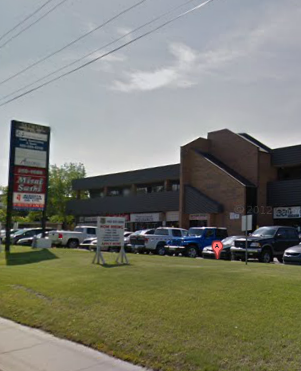Malpractice Insurance protects lawyers and their firms against claims and lawsuits that have alleged damages caused by the lawyer or firm due to not providing proper legal services. It allows a lawyer or law firm to have a financial cushion in the event that a lawsuit should occur. This goes beyond Commercial General Liability Insurance by tackling disputes that involved harm as a result of a mistake made by lawyers or their firms. Examples of this type of harm would be:
- Improper filing or disregard for filing guidelines
- Wrongly constructing contracts
- Any other actions that may be financially damaging to clients
Malpractice Insurance Also Covers
- Pre and Post Judgment
- Disciplinary Proceedings/Bar Matters
- Loss of Earnings
- Expenses associated with a subpoena
- Privacy/Cyber Protection
- Outside Director Coverage
How Much Coverage Do I Need?
The amount of coverage depends on the claim and how much the attorney or the firm can afford to lose. Their business income and assets, along with any personal assets that you want to include, determine these. Another consideration is the number of billable hours that will be lost while they are fighting their own lawsuit. If you cannot afford to lose enough time in this type of suit than higher amounts of coverage will be needed. Some coverage options include:
Prior Acts –
- This is the date after which losses may have occurred and be covered under the policy.
- This date should be the initial date the firm was formed.
Limit of Liability –
- This is the maximum amount the insurance company will pay for coverage.
- The law firm or attorney will have to decide on the appropriate limit and then judge it by the cost.
- Higher limits have a higher cost.
Deductibles –
- The amount that can be paid out-of-pocket if a loss was to occur.
Extended Reporting Period (ERP) Option –
- It covers claims that resulted from errors that occurred on or after the retroactive date and before the policy termination date and are reported during this period.
- You can choose either a five-year period or an unlimited period.
Claim Expenses –
- These are things like reasonable fees, costs, and expenses that are charged by attorney either through a retainer or are approved by the insured for a claim brought against them, which are included within the limit of liability.
Worldwide Coverage –
- This type of coverage applies wherever the lawsuit is filed.
Reimbursement for Lost Earnings –
- It is lost wage coverage for attending hearings or trials that are associated with the lawsuit.
How Much Does Malpractice Insurance Cost?
The cost of malpractice insurance is affected by how long the lawyer has been in business, the amount of coverage required, and the amount of deductible, and the area of law that is practiced. Newer lawyers are less expensive than experienced lawyers due to the smaller amount of risk. New lawyers are less likely to take cases that are complex, which means there is less room for error to occur when representing a client. In more complex cases, the more risk is involved that an error can be made. The cost for new lawyers can be as low as $700 a year whereas experienced lawyers may have to pay $5,000 to $15,000 per year.
What If I Am A Pro Bono Lawyer?
If you are pro bono there are four ways that you can access malpractice insurance.
40 Accesses to Justice (ATJ) Program –
- Can carry insurance that extends to pro bono lawyer or to offer protection through a partnership with the State Bar Pro Bono Initiative’s Litigation Assistance Partnership Program (MI-LAPP for Michigan).
- These programs are offered through a law school who have a clinical program.
- The MI-LAPP is secondary coverage, but if there is none, it will become the primary.
Through a Reverse Referral from the ATJ –
- If a client has an income and is asset-eligible under the eligibility rules and the case fits in the program’s care priorities they can be added to the docket and provide malpractice coverage to the lawyer.
The State Bar Pro Bono Initiative’s Litigation Assistance Partnership Program –
- Can offer malpractice insurance if the client that is able to fit in the ATJ program or through the reversal referral.
- The client’s income is within 200% of federal poverty guidelines.
- The client’s liquid assets do not exceed $5,000.
- The case is the private lawyer would not handle an exemplary civil matter because there is no likelihood of a fee.
Through CIMA Liability Protection Program for Legal Services Professionals and Public Defenders –
- This is a claims-made policy and the coverage is conditioned on the lawyer immediately notifying the State Bar of any potential claim.
- It provides up to $250,000 of coverage for each claim and $500,000 in aggregate for professional liability.
- It also covers up to $100,000 of coverage for each claim and $300,000 in aggregate for personal injury coverage.
There is also a limited practice policy that allows lawyers to take pro bono cases to low-income persons or to a family member or friend. It also is for those who have a practice that is slowing down. The average hours of a workweek is 5 to 10 or can be purchased for $300 a year.






More Stories
Everything You Need to Know Before You Fill an NGO Online Registration Form
Insurance As a Device For Handling Risk
Criminal Defense Attorney – The History